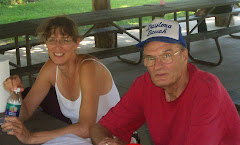We read our first Magic Tree House book Sunday. I think the fiction stories are meant for younger kids to read on their own; the one Maggie and I read didn't go over well as a read-aloud.
As I tried to sort through which books have a non-fiction companion and what topics are covered, I could not find anyplace online that lists the books chronologically. There are story arcs that continue from one book to the next, so they probably should be read in the order in which they were written. But some of us prefer to study history in the order in which it occurred, so then it's important to know the order of where the Magic Tree House books fit into a history timeline. I gathered the following information for myself from various web-pages, including the Wiki site for the series. I've rearranged it to fit my needs, and it's posted here in case anyone else may be in need of the list.
The list is roughly in chronological order. When a pair of books is listed, the first is the fiction, and the second is the non-fiction.
History
Mummies in the Morning (ancient Egypt)
Mummies and Pyramids
Hour of the Olympics (ancient Greece)
Ancient Greece and the Olympics
Day of the Dragon King (Japan 2000 years ago)
Vacation under the Volcano (Pompeii)
Ancient Rome and Pompeii
Viking Ships at Sunrise (Vikings)
Knight at Dawn (medieval knights)
Knights and Castles
Night of the Ninjas (samurai)
Stage Fright on a Summer Night (Elizabethan England)
Thanksgiving on Thursday (1621)
Pilgrims
Pirates Past Noon (Caribbean pirates)
Pirates
Revolutionary War on Sunday (1770s)
American Revolution
Civil War on Sunday (War Between the States)
Buffalo Before Breakfast (American old west -- Lakota)
Twister on Tuesday (1870 American pioneers)
Twisters and Other Terrible Storms
Ghost Town at Sundown (American old west)
Earthquake in the Early Morning (1906)
Tonight on the Titanic (1912)
Titanic
Geography
Tigers at Twilight (Indian jungles)
Afternoon on the Amazon (jungle)
Rainforests
Dolphins at Daybreak (Pacific ocean)
Dolphins and Sharks
Lions at Lunchtime (African savannah)
Polar Bears Past Bedtime (north pole)
Polar Bears and the Arctic
Good Morning Gorillas (Congo jungle)
High Tide in Hawaii (tsunami)
Tsunamis and Other Natural Disasters
Dingoes at Dinnertime (ancient Australia)
Tuesday, October 06, 2009
Subscribe to:
Post Comments (Atom)



I just found your blog this morning. I have a daughter, Brooke, who will be 7 in January and is in the first grade. She has VCFS (emphasis right now is on speech delays and learning difficulties) and we are strongly considering homeschooling her. Is there a curriculum or method that would best help with reading/math instruction? I am looking for any and all guidance.
ReplyDeleteKathi
Thanks for putting this together Susan! I'm printing it off and sticking it in my history folder.
ReplyDeleteKathi, I'm not sure what to recommend. I know that I'm doing everything "wrong" according to the experts, and it's working out extremely well. One of my sons phoned today from college, and as we chatted, we made note of the fact that my youngest (the one with VCFS) seems to have benefited immensely from living in a home with a whole lot of right-brained people who see the big picture and think outside-the-box.
ReplyDeleteFor many years I would not accept the fact that my daughter would never understand arithmetic. Everybody says VCFS kids can learn to grind out their arithmetic, but they can't understand it, and thus flounder horribly once they get to algebra. Well, I was going to use Math-U-See and games and real-life projects, etc, to ensure that my daughter could understand her math. But we just kept spinning our wheels. Everybody says Saxon is great for VCFS kids. Saxon explains what to do, how to do it, and gives oodles of repetitious practice. I love math and hate Saxon; there was no way I would even consider Saxon with my other kids. But when I found a set of Saxon 54, 65, and 76 for a whopping $3, I bought the set and that's what we're doing now. It doesn't seem to be any more effective than anything else we've done, but at least it has lots and lots of drill and practice to drive home the procedures.
I have no idea what to tell you about reading. I only taught one of my kids to read. The other five just sort of picked it up on their own. I can tell you that my VCFS daughter could not learn phonics. It just wasn't working for her. (The experts say that VCFS kids can learn phonics and decoding, but their comprehension is very poor.) Maggie learned to read mostly by the look-say method. Her comprehension is better than what the doctors expected; I think it's due to MASSIVE amounts of reading aloud in our family. We read stories. We read schoolwork. We read the Bible. We read emails and blogs. We read library books. We read as a group sometimes, and other times I read to her alone. She also listens to audio-books a lot -- usually repeating the same stories over and over and over.
I don't know if this will help you. Good luck to you on your homeschooling adventure!
Thanks! This is exactly what I was looking for!
ReplyDeleteI was totally looking for this exact list. Thank you for sharing it with the world so we don't have to "reinvent the wheel." :)
ReplyDeleteSo helpful! I'm printing off this puppy for our huge basement timeline--thanks!
ReplyDeleteThank you! Thank you! Thank you! K
ReplyDeleteThanks! This is EXACTLY what I was looking for! Thank you, thank you, thank you!
ReplyDeleteThank you for this list :)
ReplyDelete